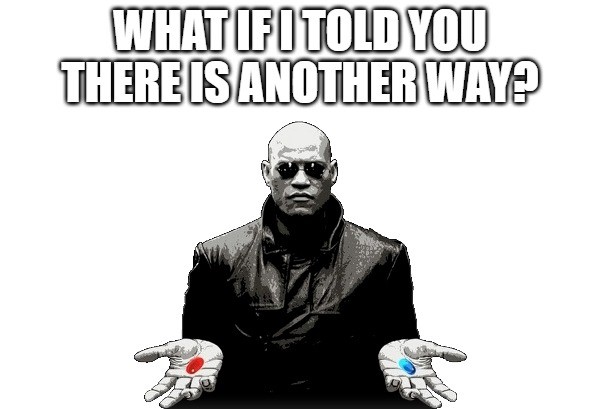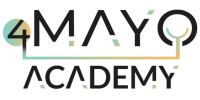Invitation to clarifying what Agile is truly about, what’s a Scrum Master and what you need to become one.
Who am I?
I am Bogdan Basilescu and I have always considered myself as a geek of all trades with a keen interest in information technology, human behavior psychology, public speaking and leadership.
After serving several years in the Mobile and Web software development trenches as a Software Engineer and while moving towards a Project Manager role, I have discovered a more humane way of working and mindset called Agile.
Since then, I have been embracing the Scrum Master accountability for several years and luckily there wasn’t any need of a mindset shift as I consider Agile Values and Principles as common sense because I’m living them on a daily basis while fighting to create a thriving & effective working environment for the Scrum teams & the organization.
Why Agile?
During my experience I’ve seen lots of people rushing into doing things without even thinking of why they are doing them in the first place.
A good example related to Agile that comes to my mind is a team that decided to work in an “Agile” way without even knowing why they wanted to work in that way, what Agile actually is and how they can actually implement it.
Therefore, if you find yourself or your team about to navigate through the same journey then you must truly ask yourselves “Why do you need Agile?”
- Are you tired of working in the same way and not achieving the expected outcome?
- Are you working in a volatile, uncertain, complex, and ambiguous market environment?
- Are your customers’ business priorities changing very often in order to adapt to the rapidly changing market?
- Are you feeling that you focus on functionality that provides no value for the end-users and customers when you are building your product?
- Are you tired of hearing <We are working “Agile”> and not truly understanding what that actually means?

What is Agile and why did it appear?
Well, contrary to common expectations, Agile hasn’t originated from software development.
It has appeared in car manufacturing, at Toyota, after World War II in Japan, as a need to adapt ways of working to the new social, political and economic realities of a volatile, uncertain, complex and ambiguous (VUCA) environment.
After World War II, when Japan started rebuilding, they faced financial & material resource problems so they called in W.E. Deming to provide support. He successfully applied the Plan-Do-Check-Act (PDCA) cycle, also known as “Shewhart cycle” to continuously improve the manufacturing process.
Together with several Japanese engineers & leaders, they have created & implemented the “Lean thinking” principles for Toyota’s Production System which had as the main goal the minimization of consumption of resources that didn’t add value to the manufactured product.
Since then, there have been lots of other great people that have continuously improved & adapted the ways of working to the VUCA environment and ultimately in 2001, 17 of them have given birth to the Agile Manifesto, a set of values and principles, which I consider to be the embodiment of this new way of working, this mindset called Agile.
Agile means figuring out constantly what’s going on in the VUCA environment by frequently inspecting your product’s value with its users and adapting as you navigate through uncertainties or unforeseen market shifts.
The Agile mindset is based on a Growth mindset given its ability of adapting and learning from the environment and it is embodied through the set of values and principles pinpointed in the Agile Manifesto. This represents the “being” part of Agile.
However, to “do” Agile and implement it effectively then implicitly you’ll need to embrace the “being” part and make use of the supporting Agile frameworks & practices while “uncovering better ways of “ adapting your product to the constant changes of the VUCA environment.
How to adopt & implement Agile?
What do the top successful companies that have adopted Agile have in common?
- “The most important single thing is to focus obsessively on the customer. Our goal is to be earth’s most customer-centric company.” – Jeff Bezos, Amazon
- “Get closer than ever to your customers. So close that you tell them what they need well before they realize it themselves.” – Steve Jobs, Apple
- “It’s very important to have a feedback loop, to look at what you’ve done and how could you be doing it better” – Elon Musk, Tesla
- “Put your consumers in focus and listen to what they’re actually saying, not what they tell you” – Daniel Ek, Spotify
They focus on the customer through early and continuous delivery of valuable product versions to maximize the frequency of feedback loops for validating product value in order to effectively increase the customers and end-users’ satisfaction.
They have built an environment where the product teams are structured based on minimizing dependencies across teams in order to enable team autonomy, self-organization and agility in decision-making.
They have managed to promote a mindset throughout the organization of breaking the barriers between some doing the thinking and some doing the working.
The “secret recipe” of this mindset shift is also captured nicely by Commander L. David Marquet in the book “Turn the ship around!” in which shares the story of how he managed to apply it successfully on an U.S. Navy submarine.
He managed to influence and turn technically competent people from followers into leaders through pushing down control in the organization while making sure it’s clear for them what’s the goal that the team is trying to achieve and while providing them with the right level of support when needed along the journey so that they can succeed.
However, these things don’t happen overnight in an organization, so like in any learning process there is a long path to mastery.
To reach this level of Agility, these companies have started experimenting with several Agile frameworks and practices and eventually some of them have actually managed to develop their own flavor of Agile frameworks and practices to better suit their product’s context.
One common mistake that most organizations make when wanting to implement Agile is that they jump directly into creating their own interpretation of an Agile framework without even understanding the already existing ones, basically they want to jump directly to mastery without even knowing the basic rules of the “game”.
Therefore, my recommendation when you want to start doing Agile is rooted in the philosophy behind the Japanese martial art concept which describes the stages of learning to mastery, called Shu-Ha-Ri:
- Shu
It means to obey the fundamental Agile values, principles and chosen Agile framework.
- Ha
It means that once you have disciplined yourself with the Agile values, principles and one Agile framework, you start to innovate and improve your way of working in the chosen Agile framework by developing your own Agile practices or by making use of other Agile complementary practices.
- Ri
It is the final stage of learning and it means that once you reach it, all Agile values, principles, frameworks and practices become natural to you and you apply the Agile way of working effortlessly while finding other creative ways to bring life to this mindset.
Therefore, I would suggest starting with Scrum as it is one of the leading Agile frameworks and one key stepping stone towards implementing Agile.
- “Scrum is a lightweight framework that helps people, teams and organizations generate value through adaptive solutions for complex problems.” – Scrum Guide 2020
Being lightweight, the rules of the “game” are quite simple, however difficult to master:
- 3 Accountabilities: Developers, Product Owner, Scrum Master
- 5 Events: Sprint Planning, Daily Scrum, Sprint Review, Sprint Retrospective and the Sprint (container event)
- 3 Artifacts: Product Backlog, Sprint Backlog, Increment
Once you follow these rules, their constraints and embed the Scrum Values into one team then you’ve created a Scrum Team.
The term “Scrum” comes from a rugby play, which involves the players packing closely together with their heads down and attempting to gain possession of the ball.
In our case, you can imagine the ball as the Sprint Goal that the team aims to achieve each Sprint, so the success in achieving it stands in how well the players on the team make use of their skills.
When running Scrum, you should see a nice example of unity of effort inside the team and to get a sense of the feeling that everyone does the thinking together because the individual mindset that comes from traditional ways of doing things should shift towards the team mindset through the commitment of achieving the goal together and not individually.

To effectively start implementing Agile you’ll need to have some people in your team with a growth mindset and team-player attitude to lead this change in the way of working and to inspire others through training, mentoring and coaching to transcend to the same level of mindset.
One of those people will need to be the Scrum Master, because he needs to drive the change throughout the team and the organization and without having this type of person then it’s like failing an Agile transformation without even starting it.
Therefore, I would like to take this chance to zoom into the Scrum Master accountability by providing you some details of what I do on a daily basis to support the Developers, the Product Owner and the organization.
What I do on a daily basis
I’m currently providing support to several Scrum teams which are working on a mobile cross-platform application by actively building the Pillars of Empiricism (Transparency, Inspection & Adaptation) for establishing empirical product planning in a VUCA environment and by constantly enhancing our way of working while shaping our mindsets towards a growth mindset, an Agile Mindset.
I’m emphasizing the importance of the three Pillars of Empiricism because they represent the foundation of Scrum and without them the Scrum events can be considered pointless and wasteful since they bring no value and no trust can be built.
Moreover, in the absence of a Growth Mindset, the effectiveness of the Scrum events or other Agile practices will not increase, therefore I consider the Agile Mindset as the catalyst for continuous improvement.
I’ve been providing support to the whole organization in its Agile understanding, through the creation of an internal company training for clarifying what Agile is truly about.
Alongside with the Scrum events, I’ve been facilitating and crafting different Agile workshops using Miro and Liberating Structures, ranging from various topics such as Agile & Scrum theoretical and practical knowledge, Retrospective Boards, Agile Games, User Story Mapping, User Story Writing, Definition of Done, Definition of Workflow, clarifying “Ready” state, Way of Working Assessments and other workshops targeted on developing or enhancing various Agile Practices inside the teams.
I’ve been providing support to the Product Owner through finding effective Sprint Goal definitions and through Product Backlog Management while coaching on the accountability.
I’ve been providing support to the Scrum Teams by helping them understand the need for clear and concise Product Backlog items by facilitating Product Backlog Refinement sessions while asking Powerful Questions for sparking new ideas regarding some corner cases or unraveling dead angles.
Moreover, I’ve been supporting the Scrum Teams with creating Release Dashboards and Team Boards for tracking various Agile Metrics such as Release & Sprint Burndown Charts, Lead & Cycle time, Bugs Count, Code coverage, Team Velocity, Customer Satisfaction, Improvements Backlog and Team Health.
Last but not least I’ve been providing support for the Scrum Teams with removing impediments that can be controlled and empowering the right stakeholders with removing the ones that can only be influenced because if they are left unidentified and untreated, they will slow down your team from delivering value to the users and eventually destroy your team’s health.
Being a true Scrum Master is not an easy accountability contrary to common expectations of many people that usually consider that the Scrum Master is the boss of the team, the secretary, the zombie Scrum gatekeeper or the slacker of the team. Unfortunately, there are lots of poor examples of Scrum Masters out there that prove that the common expectations actually have an empirical source of truth.
So, if you want to distinguish yourself from the rest and to become a true Scrum Master, then let’s explore together what it actually takes to become one.
How do you become a true Scrum Master?
There is “a very particular set of skills”, as Liam Neeson would say, that you’ll need to develop and continuously improve over time to succeed in this accountability which has been framed nicely into 8 areas in the Agile Coach Competency Framework, developed by Lyssa Adkins and Michael Spayd:
- Agile-Lean Practitioner
- Teaching
- Facilitating
- Mentoring
- Professional Coaching
- Technical Mastery
- Business Mastery
- Transformational Mastery
Along with these competencies, I consider worth mentioning some other skills that contribute to the success of someone’s ability to develop or strengthen their knowledge into these areas, which I’ll pinpoint by tackling each competency one by one:
1. Agile-Lean Practitioner
This competency area refers to the deep understanding of the Agile Mindset and its application with the support of different Agile frameworks and practices.
Therefore, to develop it effectively you should be a person who loves to continuously learn new things, learn from different experiences, who embraces challenges and sees them as opportunities to grow and who always seeks the reasoning of things before applying different practices blindly without any consideration.
- Teaching
This competency area refers to having the ability to teach the team and the organization at the right level and at the right time by taking into consideration Tuckman’s different team development stages in order to stay relevant to the maturity of the team.
To succeed you’ll need to have a genuine interest in developing other people, to have the ability to ”read the room” to deliver the right level of information at the right time, to the right audience and to continuously study effective ways of consolidating the given information into long-lasting knowledge through practical & engaging ways of teaching.
- Facilitating
This competency area refers to having the ability of maintaining neutrality while guiding a team to achieve a goal in a collaborative way.
Besides the complementary skills mentioned above, you’ll need to have good time management, conflict management, to be highly adaptable and to know exactly when to step back to let the team successfully drive towards achieving the goal.
- Mentoring
This competency area refers to having the ability of developing someone else into a similar accountability or in an area where you have a good level of experience.
Well, you can’t mentor someone without having any experience into that specific accountability or area, therefore you’ll need to gain some before actually aiming on developing this competence and afterwards the only way to become more effective is to practice it either in 1-1 sessions or group sessions.
“Leaders don’t create followers, they create more leaders.” – Tom Peters
- Professional Coaching
This competency area refers to the ability to act as a coach with an individual or team by having their own interest as the North Star of the session and while helping them explore different solutions and holding them accountable for acting on their chosen one.
To succeed you’ll need to be an active listener, to be curious, to be creative, to be able to ask powerful questions to help the person identify the blind spots of their problem and then to have the ability to spark their interest in applying what they’ve discovered during the coaching session.
- Technical Mastery
This competency area refers to having the expertise to support the team in learning and applying various technical practices in the particular area of interest in which they are working.
Without the practical experience on the “battlefield” it’s very hard to support the team in developing technical practices because you’ll find it very hard for them to actually trust or respect that you actually know what you are talking about.
- Business Mastery
This competency area refers to the ability to support the team with taking value-driven business decisions and with finding effective ways to manage the product so that your team can maximize the value delivered to the customers & eventually end users instead of only delivering some work that has cost a lot and has provided insignificant value.
You’ll need to have an entrepreneurial spirit, to be analytical so that you can help the team make decisions based on empirical data and ultimately to have a good sense of emotional intelligence because you’ll need to put yourself in your end user’s shoes to truly understand them.
- Transformational Mastery
This competency area refers to having the expertise to understand an organization from a structural, cultural and key stakeholders point of of view so that you can truly adapt it to the Agile way of working and create a long-lasting change by influencing mindsets and by improving how the product value streams across the organization.
I consider this competency as one of the hardest ones to grasp, especially at the beginning of your Scrum Master journey.
To succeed you’ll need to be able to lead by example to inspire people, to have integrity, accountability and high resilience because making a change, especially at an organizational level is not an easy task.
You’ll need lots of experience in different working environments and to work closely with different people and key stakeholders so that you can discover different human personalities, types of leadership and organizational structures that will eventually help you support an organizational design transformation to the Agile way of working.

So, as you may have already figured out, the true Scrum Master accountability is not an entry level job as you’ll need to develop great soft skills, solid technical skills and gain some experience into a particular area of expertise before you can actually become effective at your craft.
Call to action
Therefore, if you are looking to make a change and to improve your way of working, then let’s “uncover better ways of working” together and join me and other participants in the learning journey of the Agile Mindset & Scrum framework by signing up to the upcoming workshops & training.
I can’t promise you that the journey will be easy, I can only promise you it would most likely be worth it.












